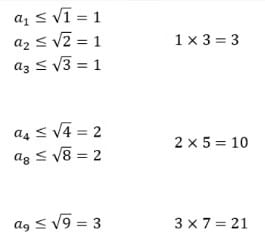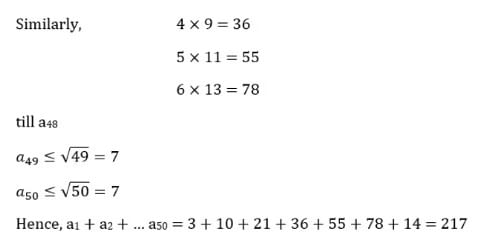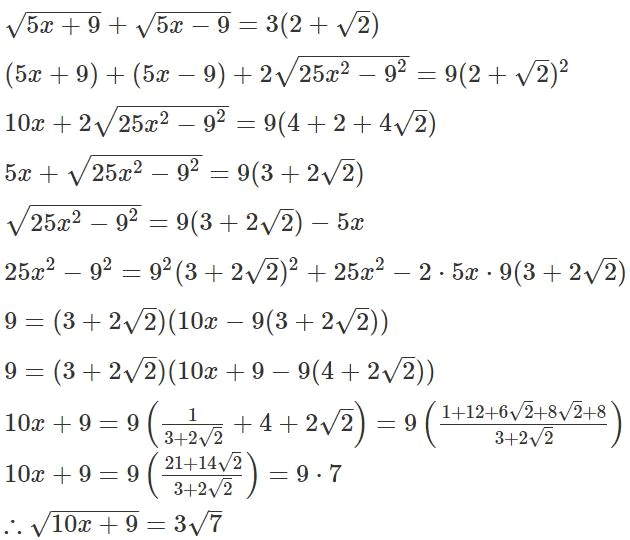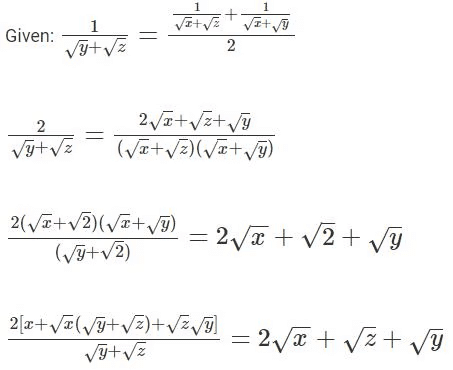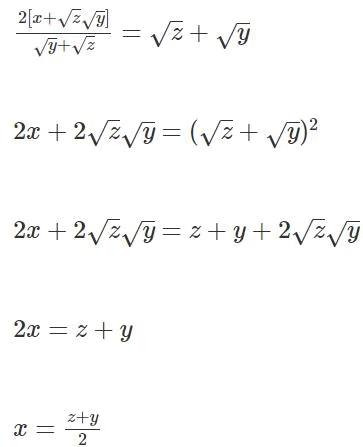CAT Previous Year Questions - Square Root and Cube Root | Quantitative Aptitude (Quant) PDF Download
2024
Q1: If (a + b√n) is the positive square root of (29 - 12√5), where a and b are integers, and n is a natural number, then the maximum possible value of (a + b + n) is
(a) 4
(b) 18
(c) 6
(d) 22
Ans: b
Sol: So 29 - 12√5 is the positive square root of (29 - 12√5).
So 29 - 12√5 = (a + b√n)²
29 - 12√5 = a² + b²n + 2ab√n
a² + b²n = 29
ab√n = -6√5
a²b²n² = 180
b²n = 180 / a²
Substituting this in the above equation:
a² + b²n = 29
a² + (180 / a²) = 29
a⁴ - 29a² + 180 = 0
a² = (29 ± √(29² - 4*180)) / 2
a² = 9 or 20
That means one of a² or b²n is 9 or 20.
We also have ab√n = -6√5; that means one of a or b should be negative.
And also the fact that this is a positive root, and we need to maximize the value of a, b, and n.
We can have a = -3, b = 1, and n = 20.
This satisfies all the above equations, and the value of a + b + n = 18
Q2: For any natural number n, let an be the largest integer not exceeding √n. Then the value of a1 + a2 + a3 + ... + a50 is
Ans: 217
Sol:
2023
Q1: If  then
then  is equal to
is equal to
(a) 4√5
(b) 2√7
(c) 3√31
(d) 3√7
Ans: d
Sol:
Q2: For some positive and distinct real numbers x,y and z, if  is the arithmetic mean of
is the arithmetic mean of  and
and  then the relationship which will always hold true, is
then the relationship which will always hold true, is
(a) √x, √y and √z are in arithmetic progression
(b) √x, √z and √y are in arithmetic progression
(c) y, x and z are in arithmetic progression
(d) x, y and z are in arithmetic progression
Ans: c
Sol:
x is the Arithmetic Mean of z & y, therefore, z, x, y form an A.P.
It goes without saying that y, x, z also forms an A.P.
|
167 videos|238 docs|95 tests
|
FAQs on CAT Previous Year Questions - Square Root and Cube Root - Quantitative Aptitude (Quant)
| 1. What are square roots and cube roots, and how are they calculated? |  |
| 2. Why are square roots and cube roots important in competitive exams like the CAT? |  |
| 3. How can I practice square root and cube root questions for the CAT exam? |  |
| 4. What are some common tricks to solve square root and cube root problems quickly? |  |
| 5. Are there any formulas related to square roots and cube roots that I should know for the CAT? |  |

